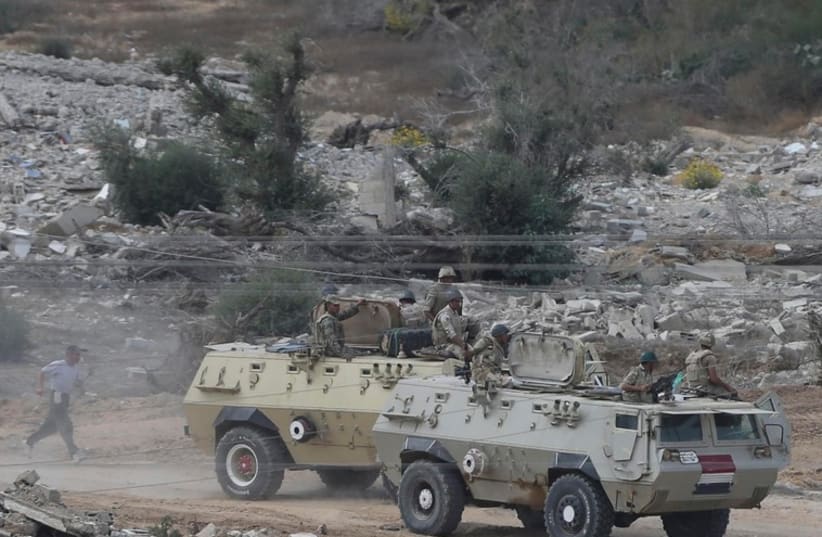See the latest opinion pieces on our page
While Houthi forces were supposedly fighting the Saudi navy, Iran’s advisers and allies were preparing another offensive in Qalamoun region of Lebanon and Syria. This border area had been taken over by groups opposing the regime of Bashar Assad in Syria.It is a complex situation, but at the bottom of it was the decision by the Shi’ite Hezbollah to intervene fully in the Syrian civil war in early 2014. As a result, those Sunni groups in Lebanon became intertwined in the Syrian civil war as well. Since August 2014 there has been a simmering conflict in the area of Arsal in Lebanon, which abuts Qalamoun. Now Hezbollah, the Syrian army and the Lebanese army are all attempting to oust Sunni Islamist groups like the Nusra front from this border area. But behind them is the hand of Iran, advising and guiding these forces that are all allies of Tehran.Meanwhile 680 kilometers west of Tehran in the town of Mahabad in Iran’s West Azerbaijan province which borders Iraqi Kurdistan, riots broke out on May 8 that pitted Kurdish protesters against Iran’s security forces. The trigger was the death of Farinaz Khosrawani, a 25-year-old Kurdish woman who fell to hear death from a hotel balcony in suspicious circumstances. The rumor among Kurds and online was that Iranian “intelligence agency employees” had tried to rape her and she jumped to her death. Iranian police seemed reticent to crack down heavily, leaving Kurdish protesters to burn the hotel and protest.The riots in Mahabad received coverage in Saudi Arabia and the Gulf Arab states. One Saudi man tweeted: “We all in the GCC [Gulf Cooperation Council] with the Kurds and we wish the Arabs in Ahwaz [Southern Iran] join them and be free of Khomeini Persian regime.” In another Tweet he noted, “It is time to destroy Iran, the mother land of problems in the ME.”The same Twitter user retweeted a Qalamoun-based news service that support the “steadfastness of the Mujahideen.”LET’S PAUSE for a second and knit these stories together.Iran’s Zarif speaks in New York. Iran’s media brags about the defeat of Saudi naval forces attempting to raid Aden. Iran’s Hezbollah and Syrian allies begin their offensive in Qalamoun. The death of a Kurdish woman sparks protests against the regime back home.Now let’s add to that list two other interesting events.On April 9 Saudi Arabia upped its air strikes on Yemen, a campaign dating back to Mid-March which seeks to roll back the Iranian-backed Houthi rebels. Iran’s Supreme leader Ali Khamanei compared the air strikes to Israel’s war with Hamas in Gaza last summer. “This is a crime, genocide...it is necessary for the Saudis to withdraw,” he said.At the same time Saudi Foreign Minister Adel Al-Jubeir had declared at a news conference, in typically diplomatic Saudi-speak, that Iran’s role was “not helpful.”He intimated that Saudi Arabia had prevented Iranian aircraft from landing at Sana’a airport. On May 9, Saudi Arabia was true to its word, bombing Sana’a airport.And the Saudis did something else over the weekend: they warned Yemenite civilians to leave a border area and then stepped up their air campaign, which may be a prelude to a ground invasion. A UN official in Yemen claimed he was “deeply concerned” about the Saudi role. No mention of the Iranians, of course.As Saudi Arabia was attempting to roll back Iran’s influence in Yemen, an Iranian Revolutionary Guards commander named Hossein Salami gave an interview in Qoms boasting that Iran was ready for a war with the US.“War against Iran will mobilize the Muslim world against the US, an issue which is very well known by the enemy,” said Salami.The picture that is painted by all this is that now is Iran’s season to bask in the sun. A weakened American policy has left the various Sunni states and Islamist groups to fend for themselves. Iran’s regime is smiling, even as its people suffer under the boot of political repression. The country is at its greatest strength since the Safavid Empire of the 16th century, indeed perhaps greater, given its inroads in Yemen and Lebanon.But there is reason to suspect that this “iron triangle” Iran has carved out, from Tehran to Qalamoun to Sana’a, is more brittle than it looks. Domestic foes inside Iran have burst on the scene at Mahabad. There may be other stirrings of resistance in Baluchistan and among the Arab minority in the south or the Azeris in the north. The GCC will grow stronger and more sure of itself due to its involvement in Yemen. Rumors on May 9 that Turkey might intervene in Syria have been denied by Prime Minister Ahmet Davutoglu, but even rumors worry the Iranian leadership. Hezbollah is concealing casualty figures from the public as it is bled white, like the French at Verdun, by its never-ending intervention in the Syrian quagmire. It has been reported to be begging for recruits in the Beka’a valley. Hezbollah may have an impressive arsenal, but men, blood and treasure sustain its operations.Iran has relied on its proxies to do the dying for it in Iraq, Yemen, Lebanon and Syria, but its proxies are weakening; witness the failure of the Iranian-backed Iraqi army offensive to dislodge Islamic State, which recently boasted of opening a four-star hotel in Mosul.Watch carefully the developments in Western Iran, Qalamoun and Yemen. There may be room for hope that Iran’s efforts will be rolled back. Zarif may be feted in New York, but he should keep his eye on the region where his forked tongue may not get him so far.Follow the author on Twitter @Sfrantzman.
Terra incognita: Iron triangle of conflict - Yemen, Mahabad and Qalamoun
From the way Iranian Foreign Minister Mohammad Zarif was welcomed in New York on April 29, one would have thought he was a great world leader.
